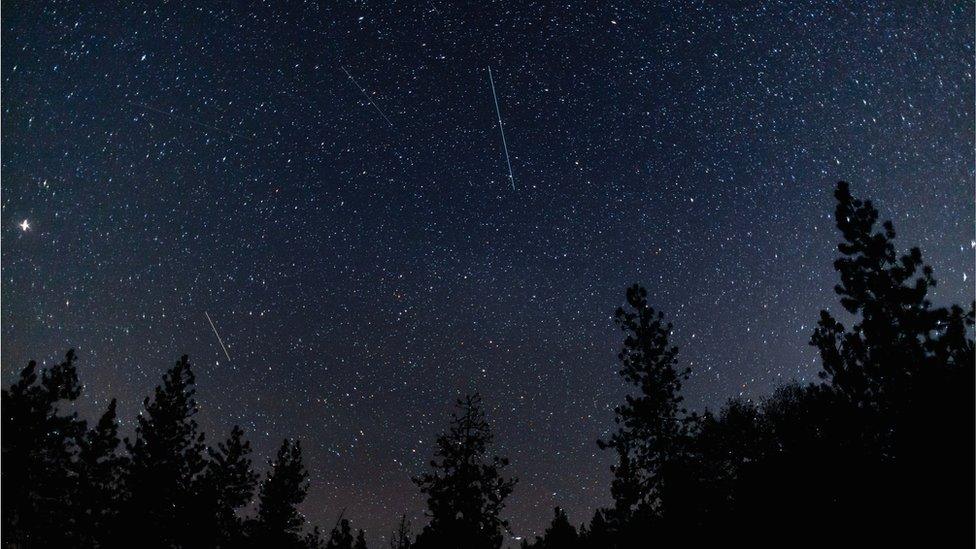Taurid Meteor Shower 2024: When is it? How can I see it?
- Published
- comments

Anyone fancy a spot of spectacular stargazing?
If the answer if yes, you're in luck because the Northern Taurids are set to peak on 11-12 November.
The Taurids take place every autumn and are a slow and long-lasting meteor shower - this year's shower will last until 2 December.
However, it is due to peak in the Northern Hemisphere later this week, which is when you'll be able to get the best view.
What is the Taurid meteor shower?
Between September and November every year, the Earth passes through a stream of debris left by Comet Encke.
According to Nasa, the dust associated with the comet hits Earth's atmosphere at a whopping 65,000 miles per hour and burns up - creating the Taurid meteor shower.
The Southern Taurids run from about 23 September to 12 November and peaked earlier this month, but the Northern Taurids are active from about 13 October to 2 December, peaking around 11-12 November in the UK and the rest of the Northern Hemisphere.
The Taurids are not as well known as other meteor showers such as the Perseids and Geminids.
This could be because there are far fewer meteors (around five per hour) compared with the Geminids (around 150 per hour).
However the Taurids are known for their fireballs - the name given to unusually bright meteors.
The Taurids get their name from the path the meteors take. If you follow the meteors they seem to begin from a point in the constellation of Taurus.
As the meteors appear in late October and early November, they are also called "Halloween fireballs".
What is a meteor shower?
A meteor is a space rock that falls into the Earth's atmosphere and, as it falls, it gets very hot.
The rock gets so hot a visible glow is created around it.
So, what we see isn't actually the falling rock - it's the glowing heat around it - racing across the sky.
When lots of meteors fall all at once around the same place, the glow of heat around them, gets brighter so we can see them.
This often looks like a shower of light in the sky.
The meteors we see have little to no chance of hitting the Earth - they are usually really small, from the size of a grain of sand to a small boulder, and burn up before they can reach us.
How can you see a meteor shower?
WATCH: Newsround's beginner's guide to astronomy
Once you know when a meteor shower is happening you don't need fancy equipment like a telescope, just a clear night with no clouds, warm clothes and some patience.
It's important to wrap up warm as you might be still for a long time - don't get cold.
Get in a comfy position, perhaps lying back on a chair so you don't strain your neck, turn off any lights you can and go to the darkest part of the garden.
Give your eyes about 20 minutes to adjust to the darkness then sit back, keep watch and enjoy.
- Published30 August 2022
- Published7 April 2021
- Published13 February 2023
